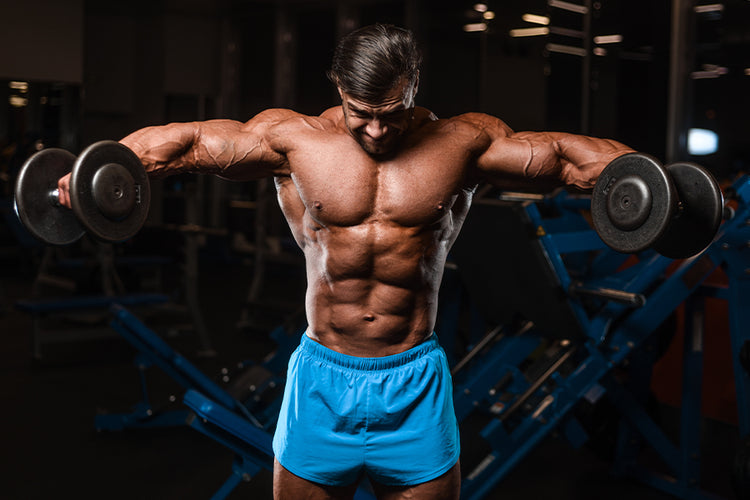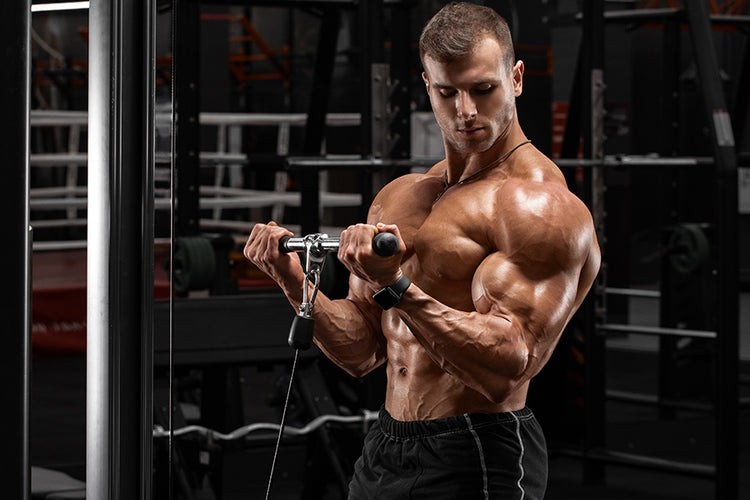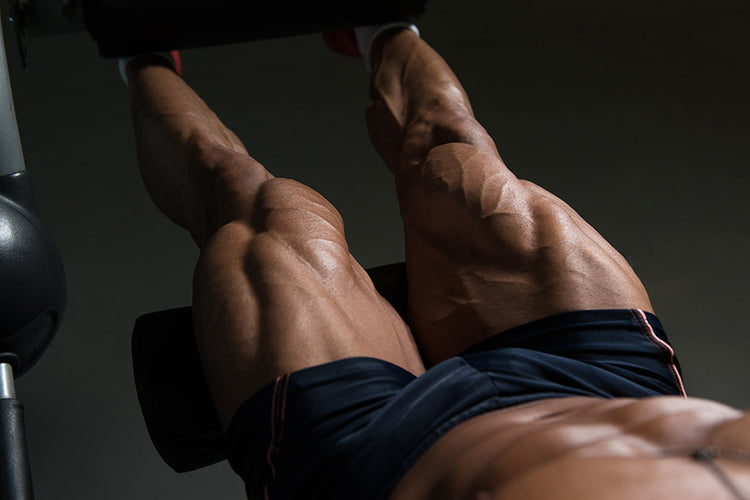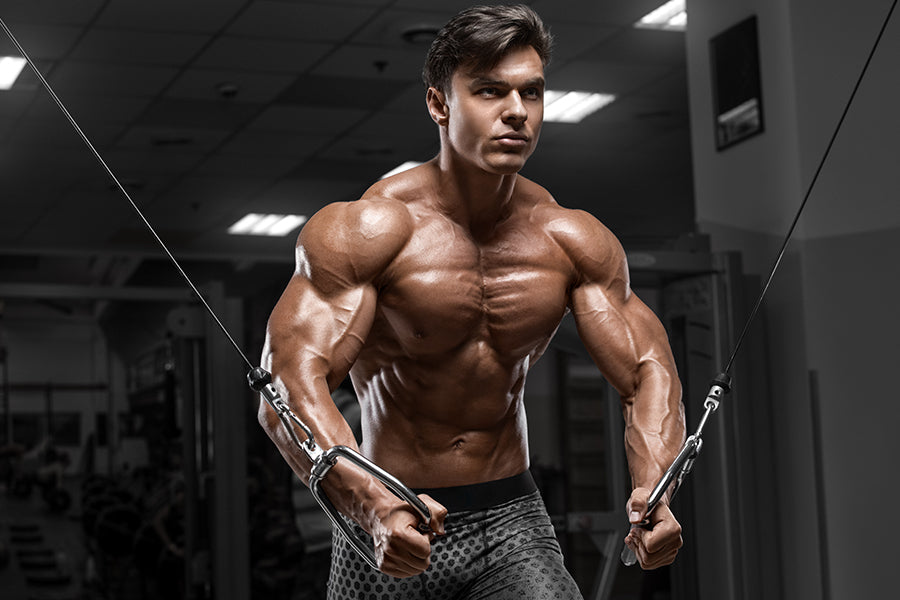Achieving a well-rounded, balanced physique is a goal shared by many fitness enthusiasts. While some body parts may naturally develop more quickly than others, it is essential to target all muscle groups to avoid imbalances that can lead to injury and hinder overall progress.
However, some body parts may need to catch up, even with a consistent and balanced workout routine. This is common, as different muscle groups may have varying activation levels during exercises, or individuals may have different genetics that affect their muscle development.
This article will identify the five most common lagging body parts and provide tips on fixing them. By incorporating our recommendations into your workout routine, you can ensure that you are targeting all muscle groups effectively and achieving a balanced physique.
Most Common Lagging Body Parts
The human body is a well-oiled machine, but sometimes certain parts lag behind. From the biceps to the hamstrings, everyone has their weaknesses. But why do these body parts fall behind, and how can we fix them? Here are five common lagging body parts and some helpful tips to get them up and running.
1. Chest

The chest is a prominent muscle group crucial to maintaining upper body strength and aesthetics. However, despite its importance, many individuals find it challenging to develop a well-defined chest.
One common mistake in chest training is using too much weight, leading to poor form and decreased muscle activation. To fix this, focus on using a weight that allows you to perform the exercises with proper form and feel the chest muscles working.
Another effective way to improve chest development is by incorporating various exercises targeting different chest areas. For example, the incline bench press targets the upper chest, while the decline bench press targets the lower chest. Dumbbell flies and cable crossovers are excellent exercises for targeting the chest muscles.
To maximize chest activation during exercises, focus on squeezing the chest muscles at the peak of the movement and using a full range of motion. Additionally, incorporating drop sets, supersets, and other advanced training techniques can help increase your chest workout's intensity and promote muscle growth.
By avoiding common mistakes, incorporating various exercises, and focusing on proper form and activation, you can effectively fix a lagging chest and achieve a well-developed and balanced upper body.
Here is a chest workout by one of the GOATs in the classic physique world; CBUM! Check out this workout to get ideas and inspiration from:
Related Article: Exercises for a Defined Chest
2. Back

The back is a complex muscle group that includes the lats, traps, rhomboids, and erector spinae.
A well-defined back contributes to an aesthetically pleasing physique and plays a crucial role in overall strength and posture. Unfortunately, many individuals struggle to develop a well-rounded back despite consistent training.
One of the common mistakes in back training is relying on momentum and sacrificing proper form, leading to reduced muscle activation and increased risk of injury. To address this issue, focus on using a weight that allows you to perform the exercises with proper form and control.
Incorporating multiple exercises to target different areas of the back is another effective way to improve back development. The lat pulldown is excellent for targeting the lats, while the barbell row targets the upper and middle back.
Chin-ups and pull-ups are also effective exercises for building back strength and size. It's essential to focus on squeezing the back muscles at the peak of the movement and using a full range of motion to maximize back activation during exercises.
Furthermore, incorporating unilateral exercises, such as single-arm rows and pulldowns, can help correct muscle imbalances and promote overall back development.
By incorporating these strategies into your workout routine, you can effectively target a lagging back and achieve a well-developed and balanced physique.
For inspiration, ideas and knowledge, here is a great video outlining a scientific way on how to properly develop your back:
3. Shoulders

The shoulders are one of the most important muscle groups in the upper body for their aesthetic appeal and their role in stabilizing the shoulder joint and facilitating upper-body movement.
However, many struggle to develop well-rounded and proportionate shoulders, leading to a lagging appearance. This can be due to various factors, including genetics, training mistakes, or an imbalance in muscle activation.
One common mistake in shoulder training is focusing too much on pressing movements, such as bench presses and overhead presses, while neglecting exercises targeting lateral and posterior deltoids.
This can lead to an imbalance in shoulder development, with the front delts becoming overdeveloped and the other two heads needing to catch up. It's important to incorporate exercises that target all three heads of the deltoids to fix this issue.
Lateral raises, for example, are an excellent exercise for targeting the lateral deltoids, which are responsible for lateral shoulder abduction. Rear delt flyes, on the other hand, target the posterior deltoids, which are responsible for shoulder extension and horizontal abduction.
Overhead and Arnold presses effectively target the anterior deltoids responsible for shoulder flexion. It's essential to use proper form and avoid excessive weight when performing these exercises to prevent injury and increase muscle activation.
In addition, incorporating enough rest and recovery between workouts, along with adequate nutrition, can help to promote muscle growth and allow the shoulders to develop appropriately.
If you want to take your post-workout recovery to the next level, consider adding a Post-Workout Powder to your routine. These powders are specifically formulated to help replenish your muscles with the nutrients they need to recover and grow after a challenging workout.
By incorporating exercises that target all three heads of the deltoids, using proper form, taking advantage of the benefits of a post-workout powder, and ensuring that you're giving your body enough rest and proper nutrition, you can help promote shoulder muscle growth and achieve the well-rounded, balanced physique you've been working towards.
With consistent training and attention to these factors, you can effectively address shoulder imbalances and achieve a more aesthetically pleasing and functional physique.
Here is a great video outlining how to build more capped shoulders by another one of my favorite YouTubers Eugene Teo. Enjoy!
4. Arms

Developing well-rounded biceps and triceps can be a challenging feat for many individuals. While some may have a genetic predisposition for arm muscles that are slower to develop, other factors can contribute to lagging arms, such as training mistakes and insufficient rest and recovery.
One common mistake in arms training is using momentum to lift weights instead of focusing on proper form and muscle activation. It can lead to reduced muscle stimulation and limited growth potential.
To fix this issue, using a weight that allows for a full range of motion, maintaining proper form and control, and focusing on the mind-muscle connection during exercises are essential. Varying arm exercises are another critical factor in achieving well-developed biceps and triceps.
Performing a range of exercises that target different areas of the arms, such as preacher curls for the long head of the biceps and skull crushers for the lateral head of the triceps, can help to promote overall arm development and prevent muscle imbalances.
Rest and recovery are also critical for arm muscle growth. Overtraining can lead to muscle breakdown and hinder growth potential. Adequate rest and recovery time between workouts can support muscle growth and repair.
In summary, fixing lagging arms requires attention to proper form, various exercises, and adequate rest and recovery. With consistency and focus, it's possible to achieve well-rounded and proportionate biceps and triceps that enhance overall upper body aesthetics and function.
For inspiration, ideas and knowledge, Jeff Nippard has an amazing video outlining a scientific way on how to properly develop and grow your arms:
5. Legs

Lagging leg muscles can be a frustrating problem for those who desire a balanced and proportionate physique. Several factors can cause lagging leg muscles, including inadequate focus and intensity during leg training, insufficient rest and recovery, and poor exercise selection.
A common error during leg training is neglecting or failing to put enough effort into leg exercises. This can result in slower leg muscle development and weaker strength gains.
You must dedicate enough time and energy to leg training, focusing on compound exercises such as squats, lunges, and deadlifts that simultaneously work for several muscle groups.
Another area for improvement with leg training is poor exercise selection, which leads to muscle imbalances. Neglecting specific leg muscles or over-emphasizing others can cause disproportionate leg development.
The solution to this is performing exercises that target all areas of the legs, including the quadriceps, hamstrings, glutes, and calves, to achieve a balanced and proportional lower body. Consider adding Hip Circle Bands to your leg training routine; these resistance bands can provide extra tension to your glutes, hips, and thighs, helping you to activate and engage those muscles even more effectively.
Finally, insufficient recovery time is another cause of lagging leg muscles. Overtraining the legs without allowing enough time for rest and recovery can lead to muscle breakdown and hinder growth potential.
Therefore, rest properly, recover between leg workouts, and focus on nutrition and hydration to support muscle growth and repair.
Fixing lagging leg muscles requires a focused and intense training approach, proper exercise selection, and adequate rest and recovery time.
Individuals can make significant progress by addressing lagging leg muscles with a comprehensive training plan, including exercises that target all leg muscles, such as the glutes, quadriceps, hamstrings, and calves.
Lastly, here is an awesome video to help provide you with even more ideas and motivation to get out there and start growing your legs! Enjoy!
Related Article: 6 Best Leg Exercises That Will Get You in Shape Fast
Final Verdict
Lagging body parts can frustrate those striving to achieve a well-rounded and symmetrical physique. However, individuals can make significant progress toward achieving their fitness goals by identifying the root causes of each lagging body part and implementing targeted solutions.
Whether incorporating various exercises, focusing on proper form and activation, or prioritizing rest and recovery, addressing these common issues can help overcome lagging body parts and achieve a balanced and proportionate physique.
Committing to a comprehensive training program and consistent efforts can help you overcome lagging body parts and build the muscular, healthy, attractive bodies you desire.











